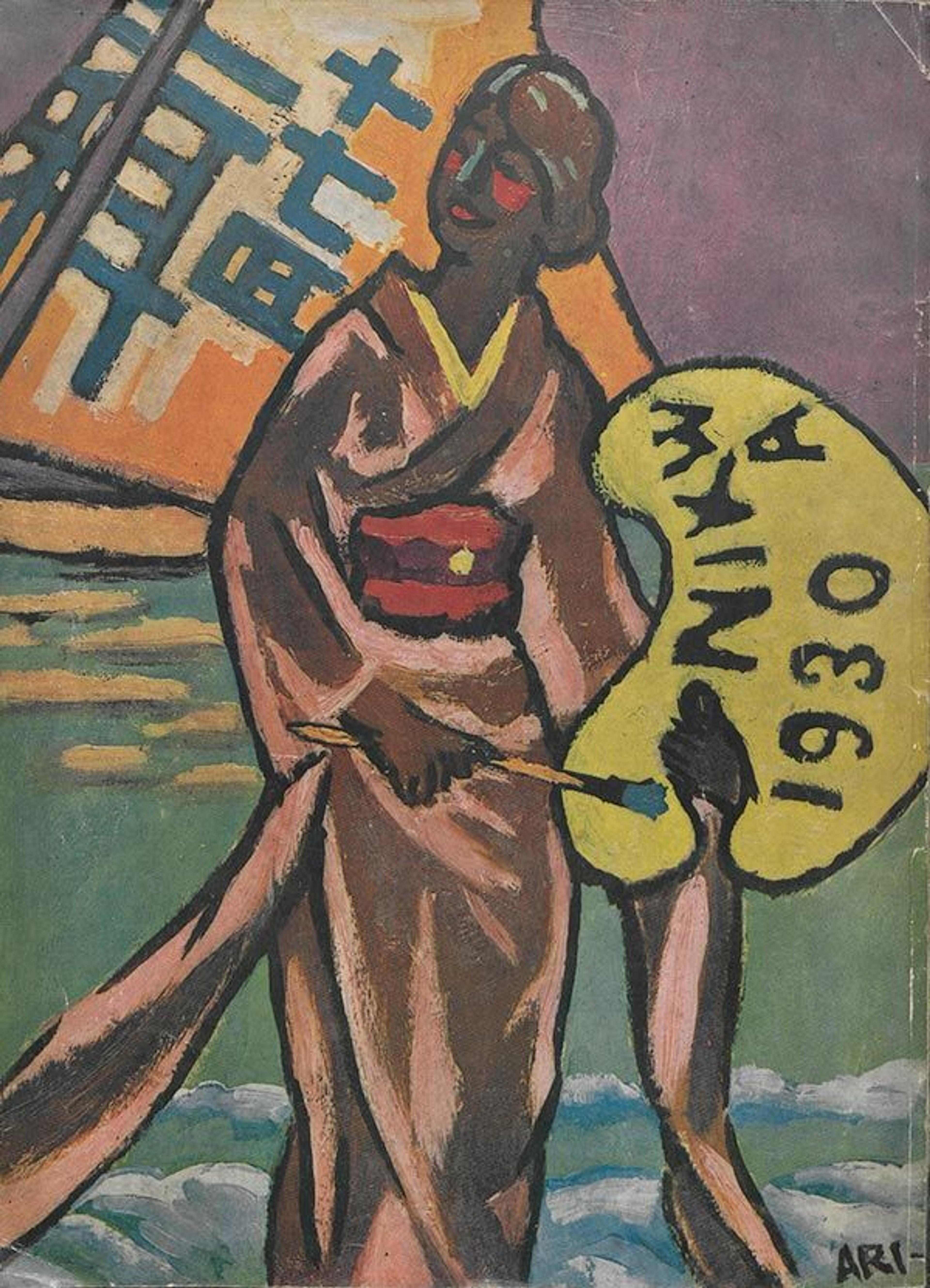
Nika gashū: Shōwa gonen aki daijūshichikai nika bijutsu tenrankai shuppin. Tōkyō: Nikakai, Shōwa 5 (1930)
«In the past two years, Watson Library has added more than one hundred exhibition catalogues and yearbooks that document the development of modernism in Japan, a selection of which is currently on display in the Library. This collection is exceptional for a few reasons. Firstly, Watson appears to be the only institution outside of Japan to own several of these publications. In addition, the subject matter is intriguing: experimental artistic activity in Japan that was concurrent with America's trailblazing 1913 Armory Show and the vanguard European art movements including Fauvism, Cubism, and Surrealism. Finally, it's rare to find copies of Japanese art books of this period in such fine condition.»
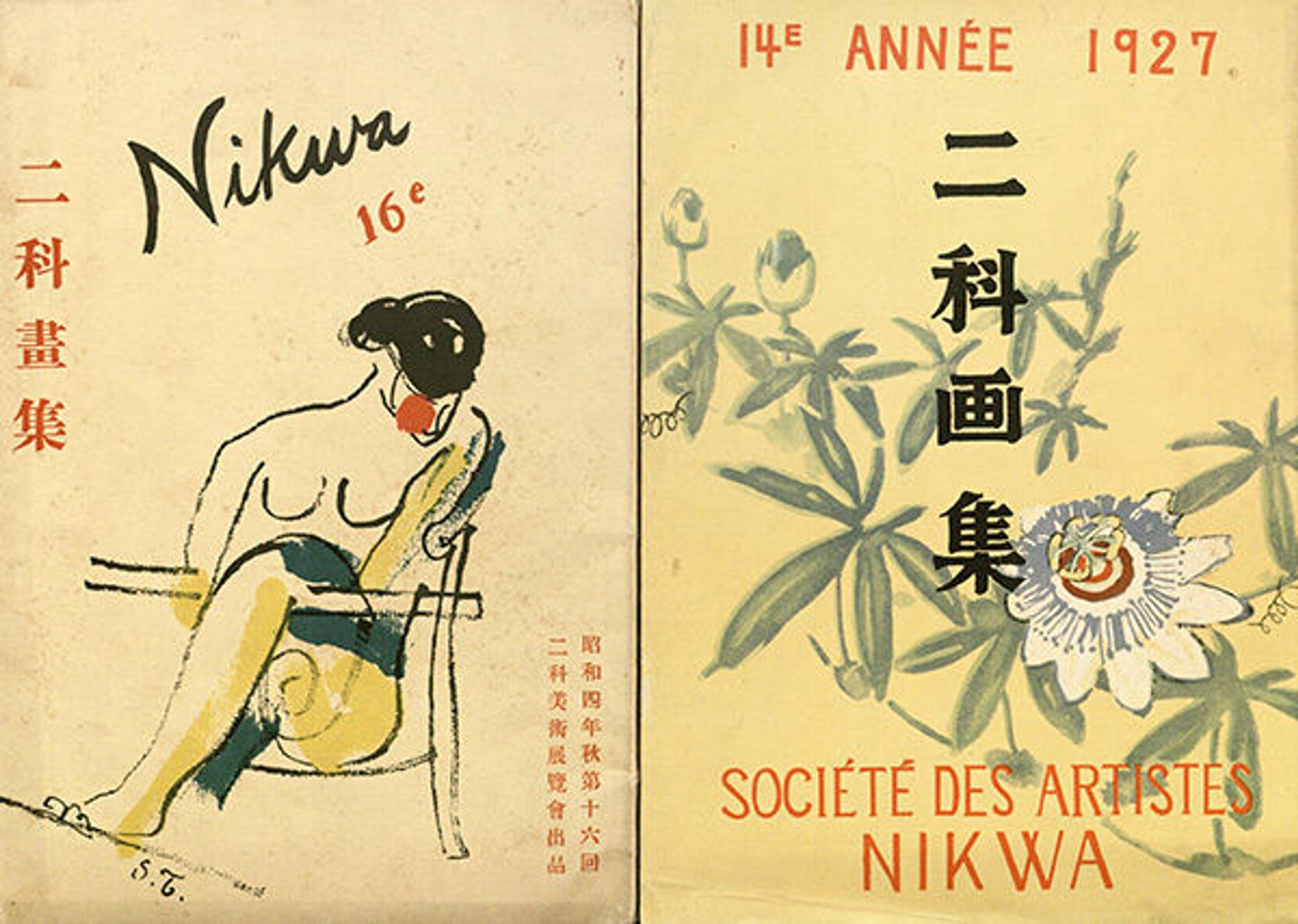
Left: Nika gashū: Shōwa yonen aki dai jūrokkai nika bijutsu tenrankai shuppin. Tōkyō: Nikakai, Shōwa 4 (1929). Right: Nika gashū: Shōwa ninen aki dai jūyonkai nika bijutsu tenrankai shuppin. Tōkyō: Nikakai, Shōwa 2 (1927)
Independent art associations had a profound effect upon Japanese art in the early twentieth century. The most influential of these was Nika-kai (Second Division Society), a society of progressive Japanese artists formed, in 1914, as a reaction against governmental exhibitions and its selection process. Offering a platform for emerging avant-garde artists, Nika-kai published catalogues (see above) to accompany their annual exhibitions of painting, sculpture, and photography.
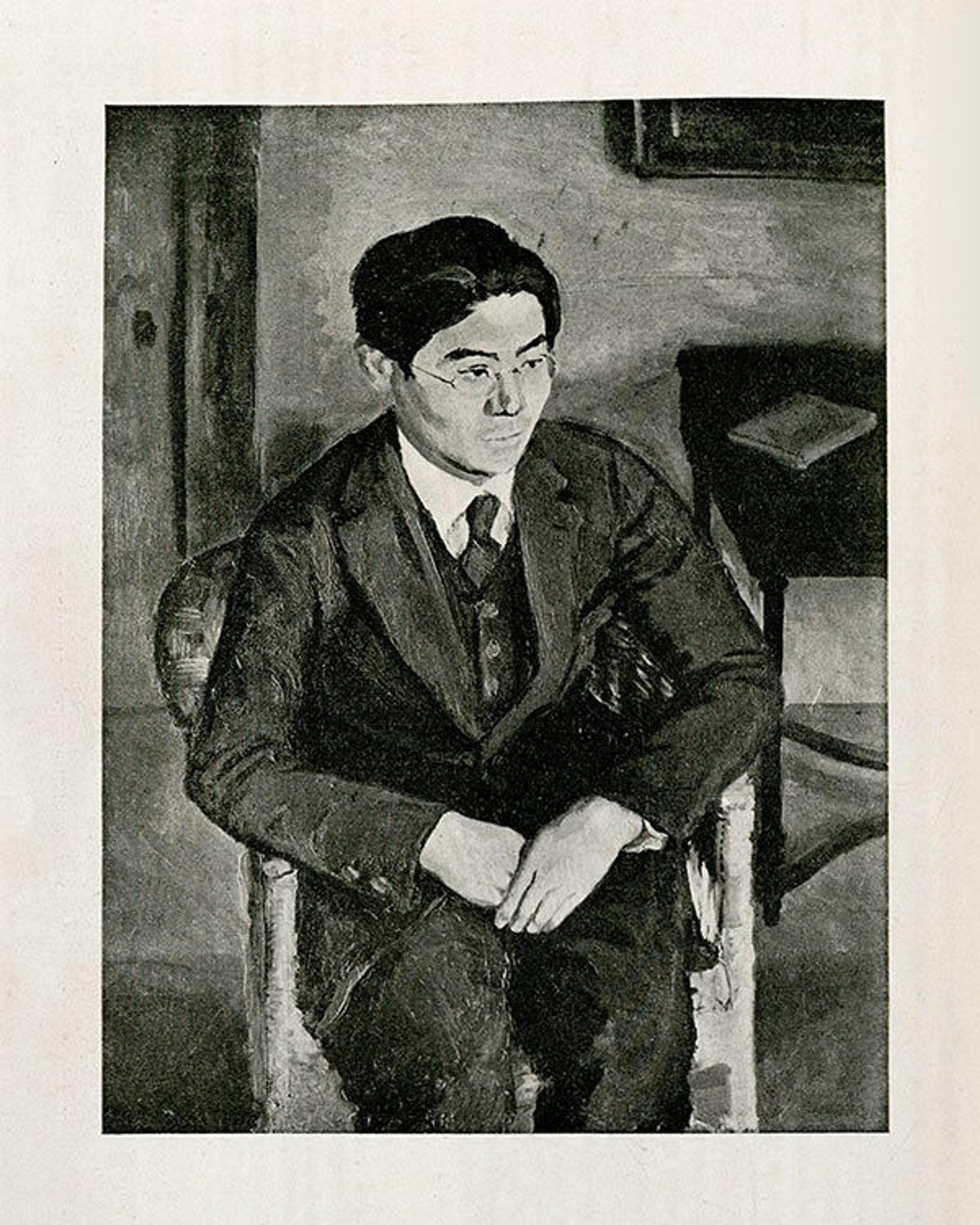
M shi no shozo = Portrait of Mr. M by Yoshinori Kinoshita (1898–1996), from the Nika-kai exhibition catalogue shown above (1927)
The issues—strikingly illustrated—emphasize the breadth of artistic creativity in Japan during the Taishō and Shōwa periods.

Left: Dokuritsutenshū: Shōwa kyūnen. Tōkyō : Asahi Shinbunsha, Shōwa 9 (1934). Right: Dokuritsutenshū: Shōwa hachinen. Tōkyō : Asahi Shinbunsha, Shōwa 8 (1933)
Other independent artist associations formed at this time include the Independent Art Society (Dokuritsu Bijutsu Kyōkai), which was founded in 1930 and held its first annual exhibition the following year, assembling Japanese artists who worked in yōga, Fauvist, Cubist, Surrealist, and other modern styles. These catalogues (above) were issued contemporaneously with the Nika gashū catalogues.
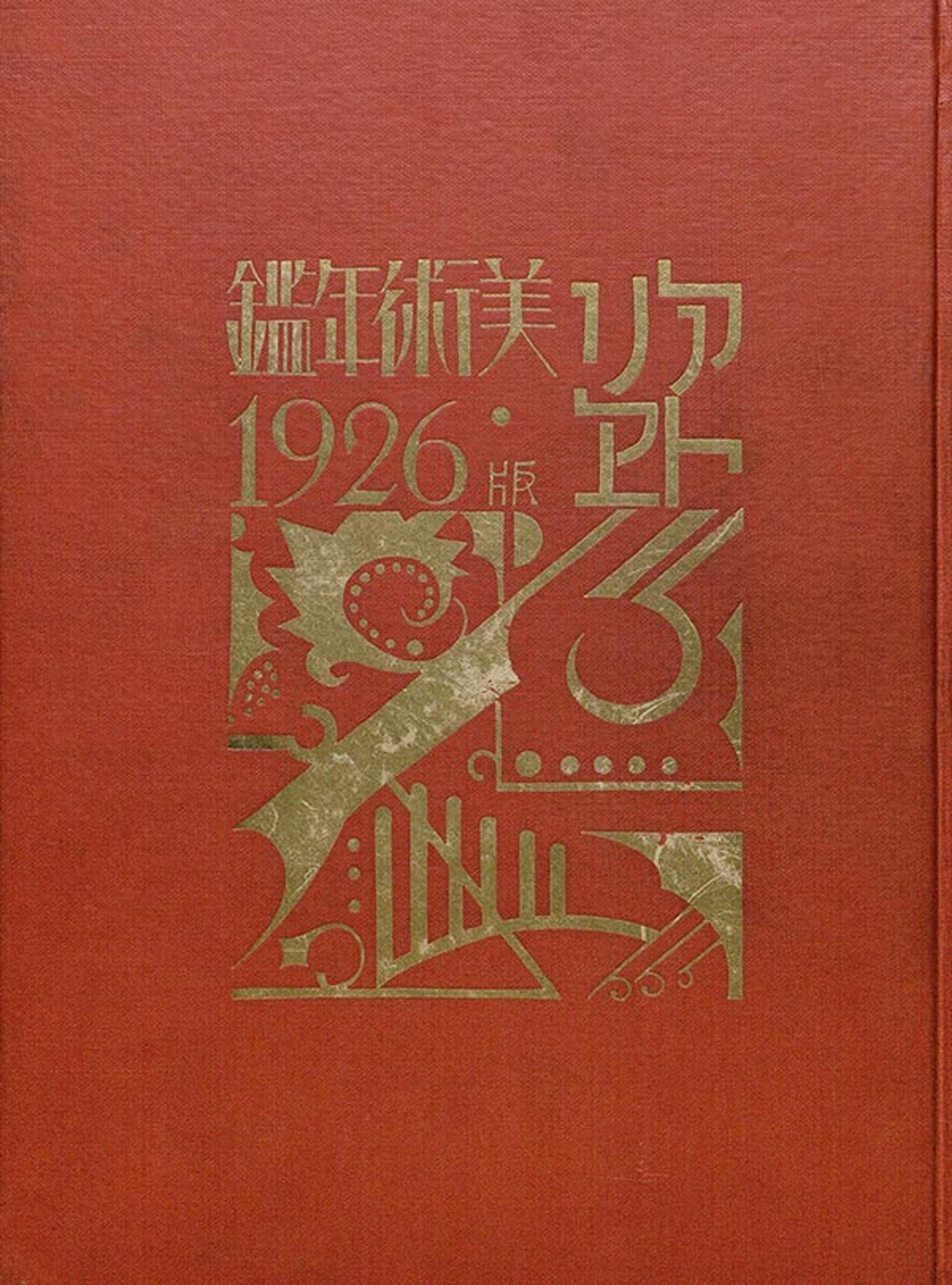
Atorie bijutsu nenkan. 1926nenban. Tōkyō: Atoriesha, Taishō 15 (1926)
In addition to exhibition catalogues, anthologies and yearbooks published during this time provide a snapshot of the emerging art scene of early twentieth-century Japan. This yearbook (above) is from the Taishō period (1912–1926), a time of artistic experimentation as Western movements were introduced to Japan.
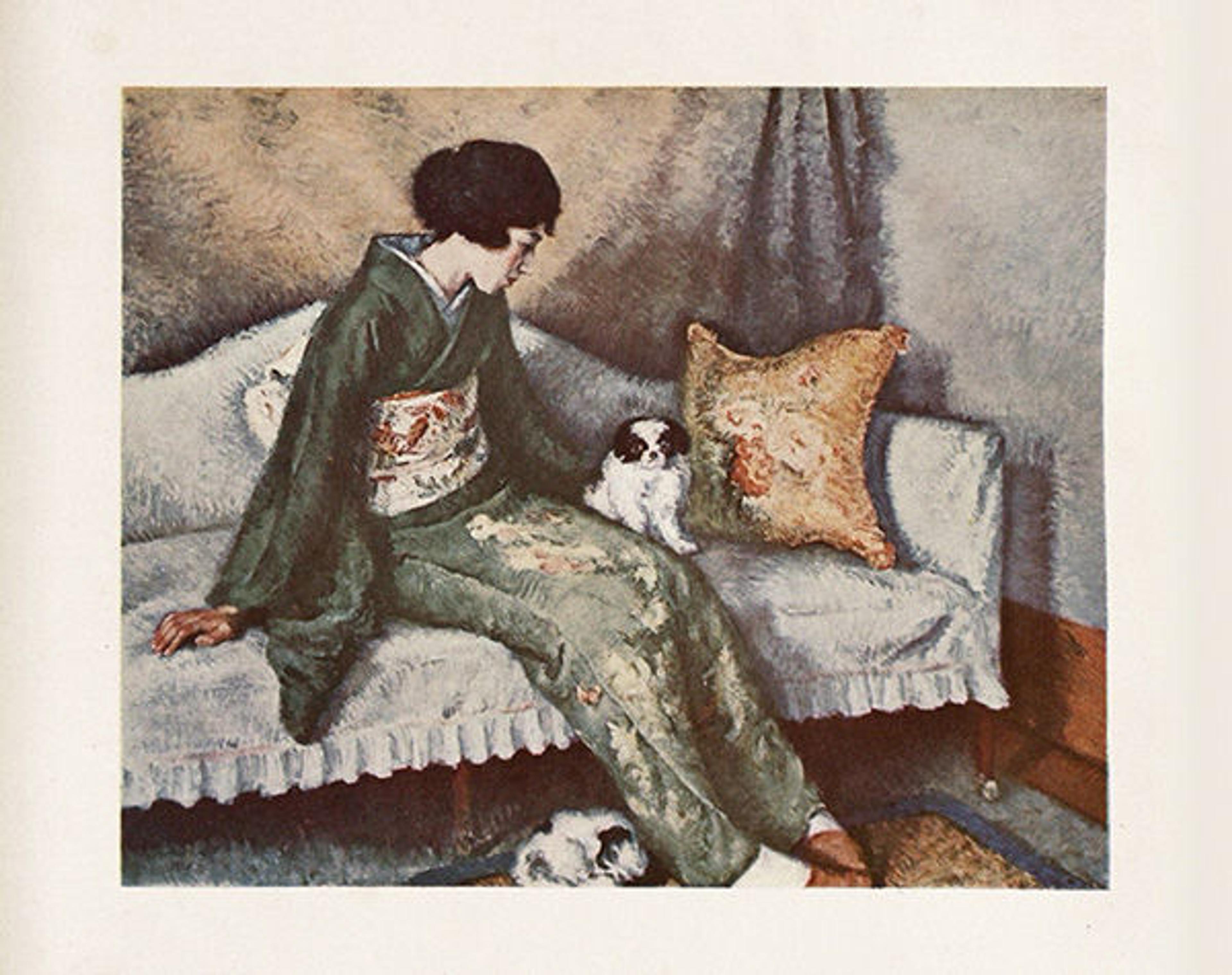
Page from the 1926 yearbook featuring Ryokui/Green kimono by Yoshihiko Kumaoka (1889–1944)
Multiple pages from this yearbook, like the one shown above, illustrate how common portraits of women were during this early modern phase of Japanese art. These studies also suggest a departure from traditional Japanese portraiture, and are representative of the expanding Western influence.
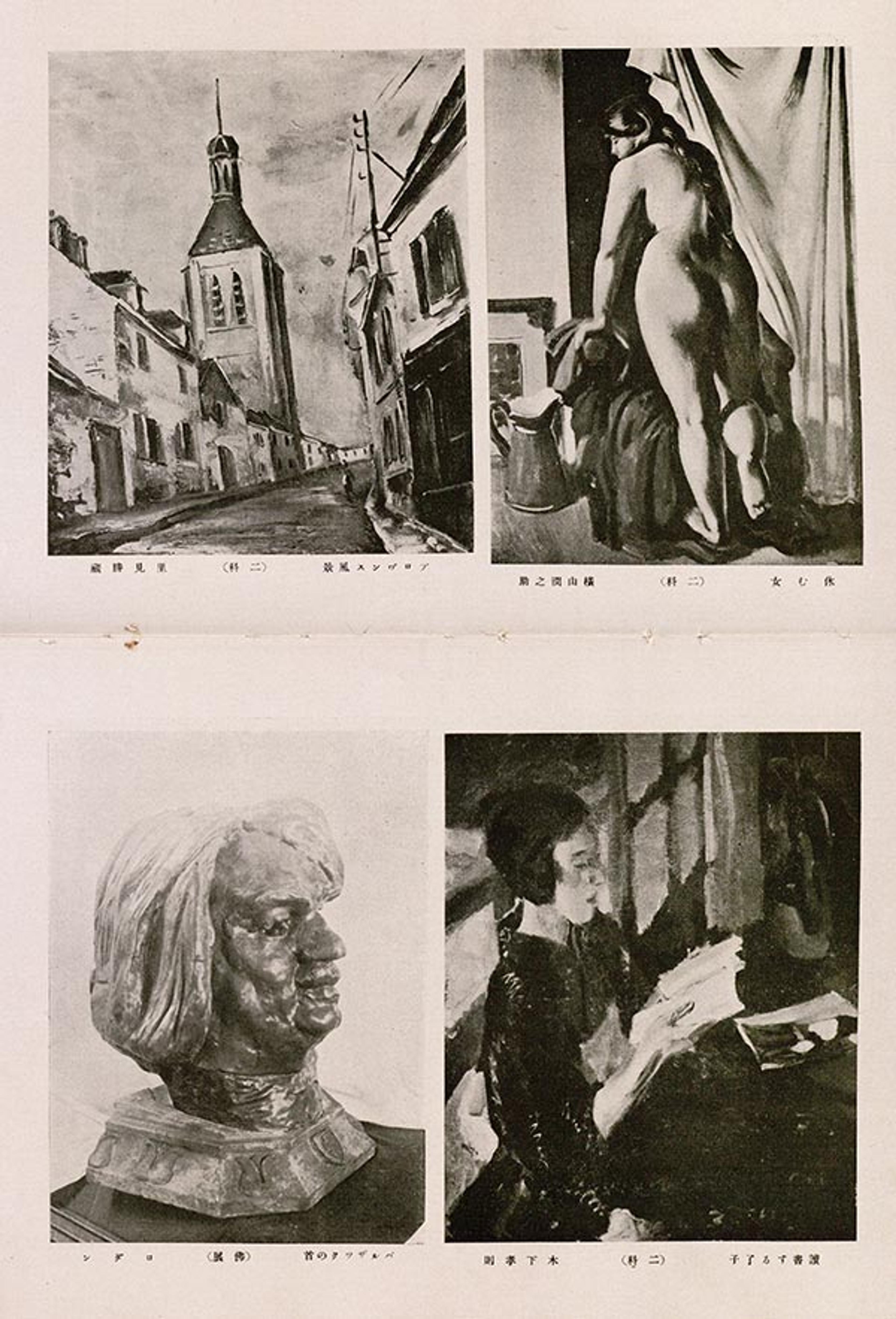
More examples of emerging Japanese artists from the 1926 yearbook. Clockwise from top right: Junnosuke Yokoyama (1903–1971), Takanori Kinoshita (1894–1973), Auguste Rodin (1840–1917), Katsuzo Satomi (1895–1891)
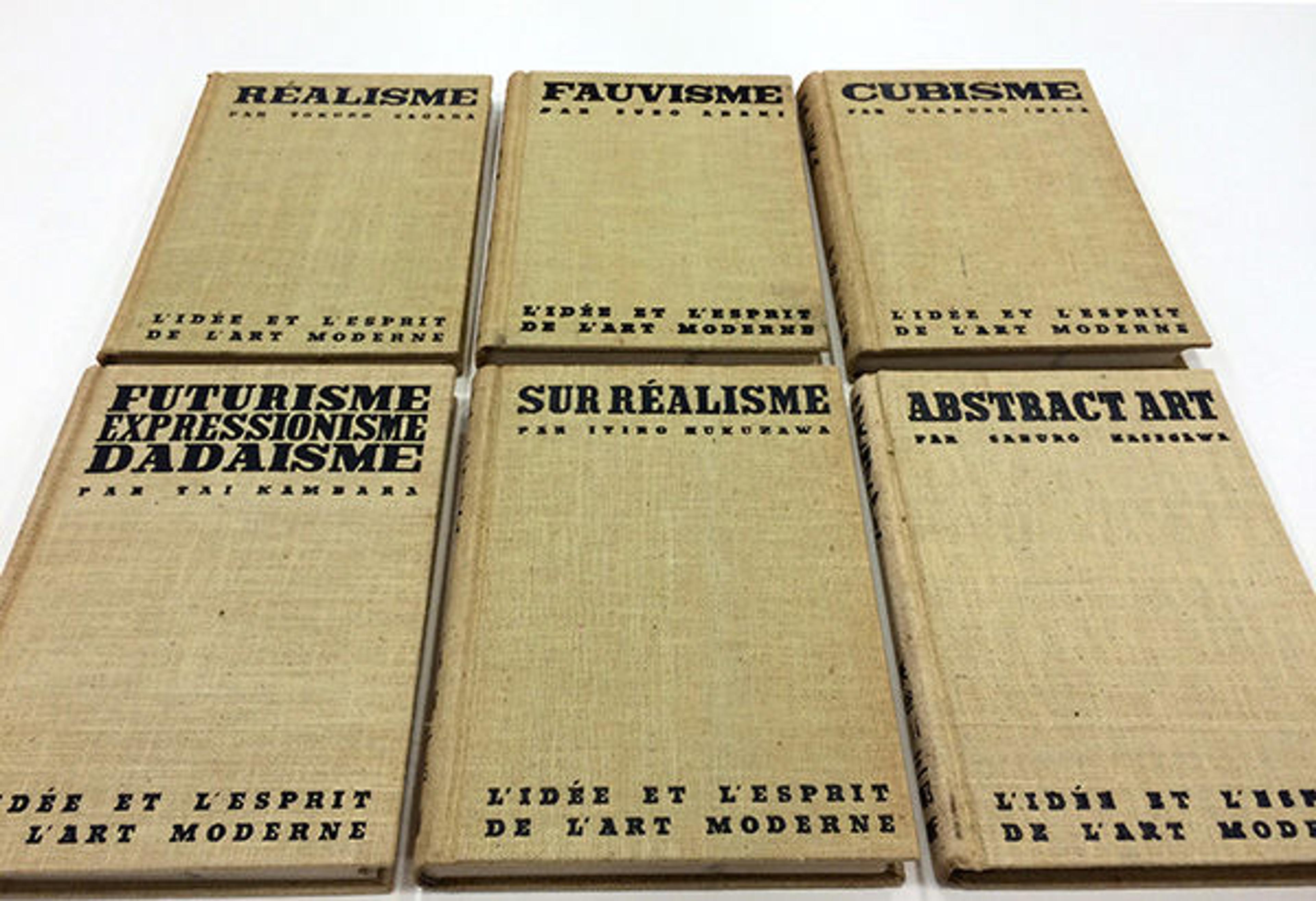
Kindai bijutsu shichō kōza = Lʹidée et lʹesprit de lʹart moderne. Six volumes. Tokyo: Atoriesha, Shōwa 12 (1937)
Demonstrating the modernist influence of the West, this famous six-volume set, written by Japanese artists in the 1930s, explores movements in modern art through scholarly essays and numerous black-and-white lithographs.
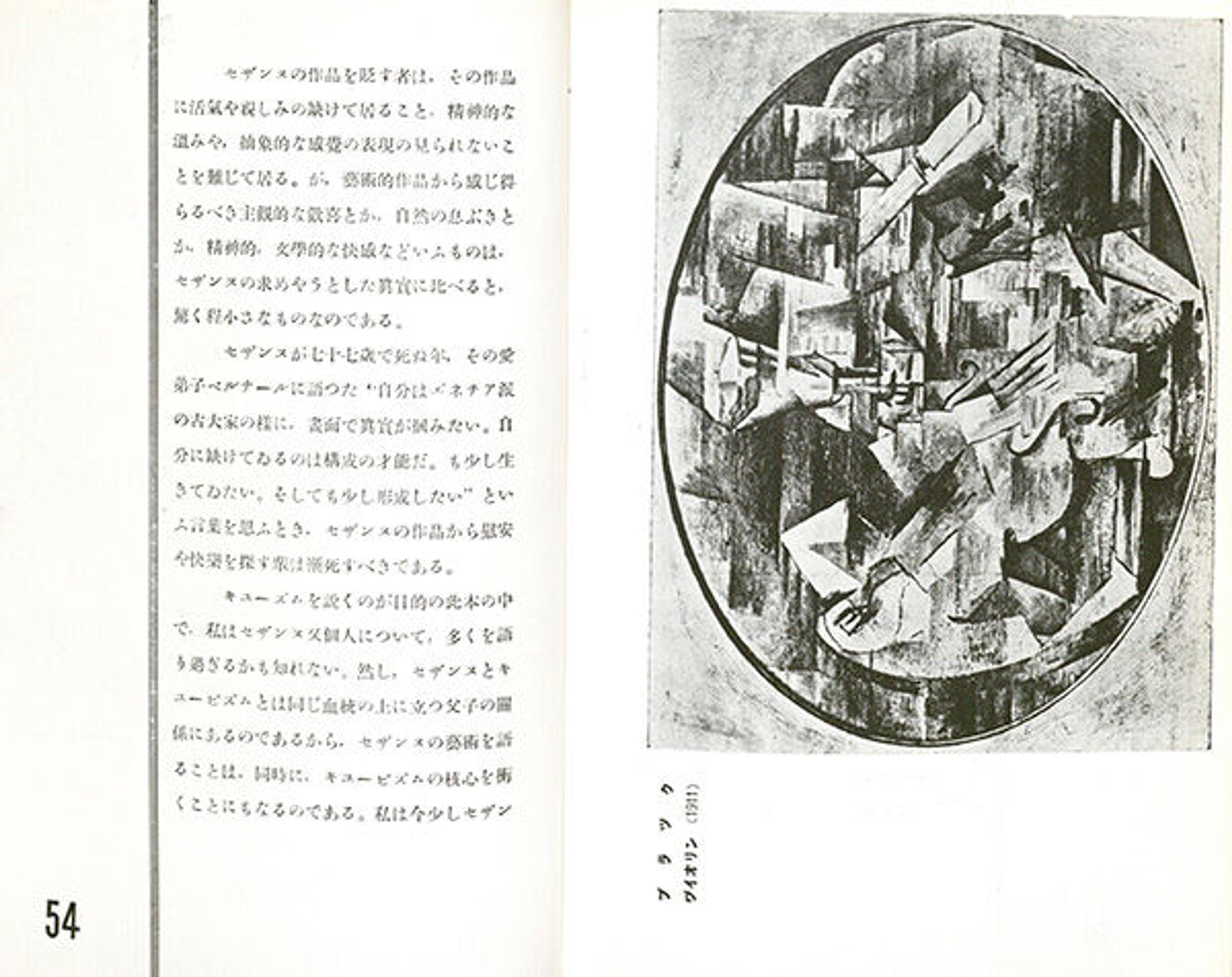
Spread from Cubisme, Volume 3, demonstrating the key characteristics of the movement with a painting by Georges Braque, Violin (1911)
Notable artists in the series include Ichiro Fukuzawa (Surrealism), Saburo Masegawa (Abstract Art), and Tai Kanbara (Futurism/Expressionism/Dada). These volumes are covered in pale-yellow Japanese plain-weave cotton cloth and bound in a Western style with pages read left to right. Individual French-language titles are stamped in black on the front covers and Japanese-language titles stamped in black on the spine. It appears that Watson Library is the only institution outside of Japan to own this series in its entirety.
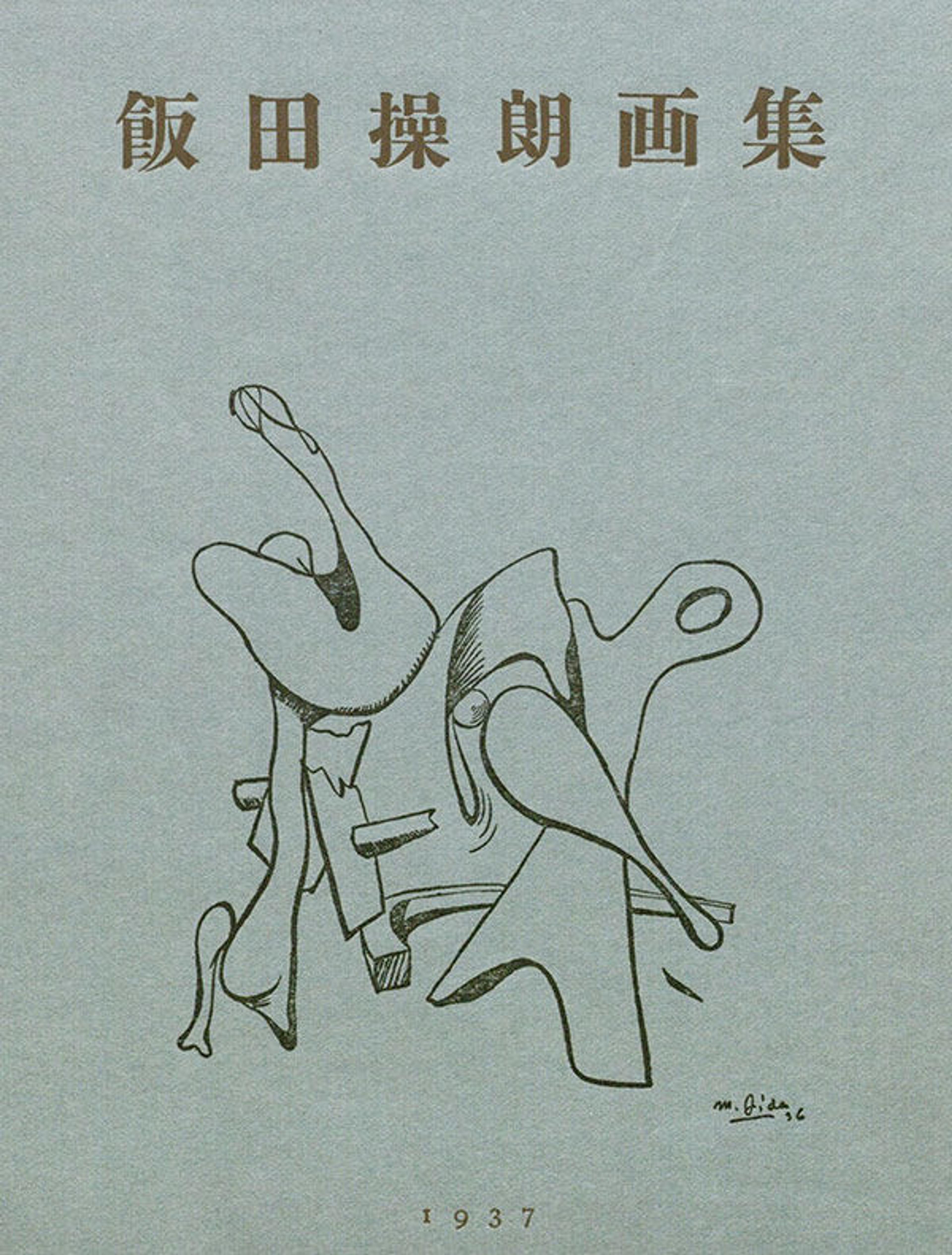
Iida Misao gashū. Tōkyō: Shunchōkai, Shōwa 12 (1937)
In addition to independent exhibition catalogues and annuals, Watson also has a collection of rare Japanese artist monographs that reflect the modernist expressions of the period. This book, published in 1937, is one of two existing publications about notable Surrealist artist Iida Misao (1908–1936). Misao died young and much of his work was burned during the Second World War, so this monograph is especially valuable. The only other known Misao publication is a 1996 exhibition catalogue held at the Himeji Municipal Museum, of which Watson owns a copy.
These important primary source publications were purchased with funds provided by the Friends of Thomas J. Watson Library.
Special thanks to Yukari Hayashida, Megumi Hill, and Machiko Kimball for their contributions to this post.
Related Links
In Circulation: "Japanese Theater and Textiles" (October 29, 2014)
In Circulation: "The Art of Japanese Books" (October 22, 2014)
In Circulation: "100円ショップ スキャニング (Hyaku-en Shoppu Sukyaningu): Digitizing Priceless Books with Dollar-Store Materials" (September 3, 2014)